"Anyway, rant over. Let's return to our model of the human body, which comprises a hierarchy of Markov blankets. The outermost Markov blanket represents the psyche, or identity, of the person inhabiting the body. In MPD, it's as if the deeply-held beliefs of that outermost Markov-blanketed consciousness, change rapidly when a patient switches between their personalities."
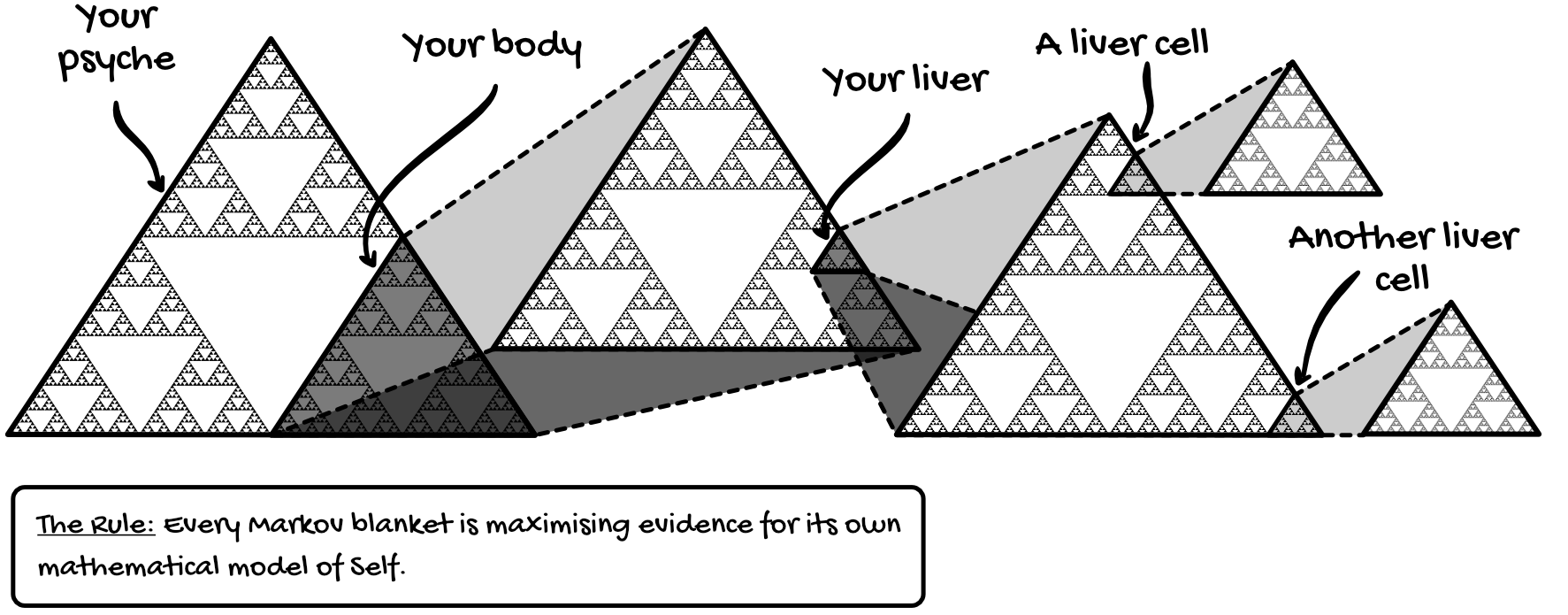
"I'm going to illustrate this concept using a stencil. The dotted line represents the observer's consciousness — who they believe themselves to be; their psyche; their mathematical model of reality. The shape of the dotted line represents the specific personality inhabiting the body. In my model, one personality believes itself to be a square. Another personality believes itself to be a circle. And yet another personality believes itself to be a star. We'll start with the square personality inhabiting the body."
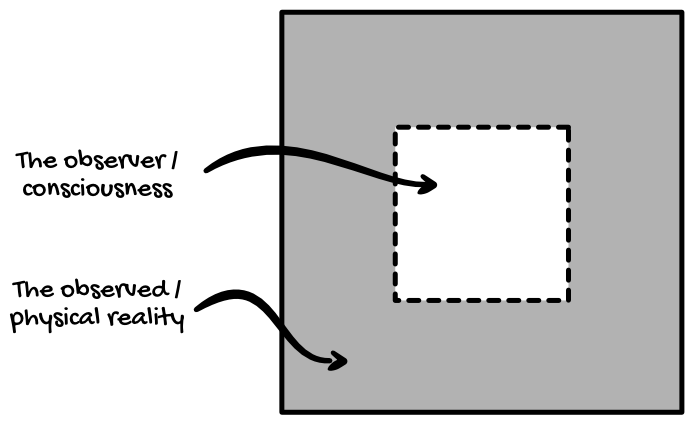
"The grey area represents the observed. It includes everything this person observes 'out there' — their body, other people, the environment. It represents all the information coming into their senses.
If the square personality is inhabiting the body, then all the data entering her senses confirms that she is who she believes herself to be — namely, a square. Therefore, the system is in homeostasis. Her consciousness believes herself to be a square, and her body is arranged in a square shape. This represents a low-entropy state because her body is maximizing evidence for her mathematical model of Self (i.e., the belief: 'I am a square').
Now let's change personalities. A new personality suddenly takes over the body, and this one believes she is a circle. Because her deeply held beliefs have changed, she has rapidly thrown the system out of homeostasis. All the data entering her senses confirm that she is a square, but her consciousness believes itself to be a circle. To resist entropy, the body needs to rearrange itself from a square into a circle. In doing so, the body maximizes evidence that this person is who she now believes herself to be — namely, a circle."
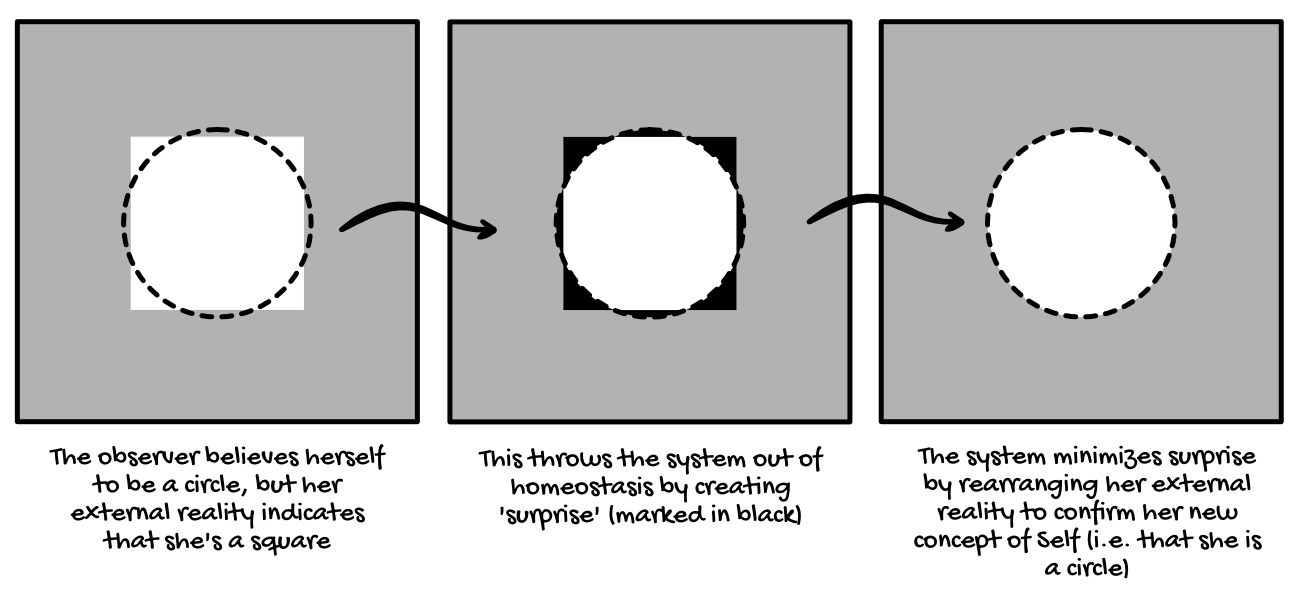
"I want you to notice what is happening here," I said. "Mathematically, the delta between the dotted line (the observer) and the grey area (the observed) represents a prediction error. There is a gap between Who She Believes Herself To Be (a circle), and Who Her External Reality Tells Her She Is (a square). Another word for prediction error is 'surprise.' Therefore, I've represented surprise as the black area in the diagram.
If every Markov blanket is maximizing evidence for its own mathematical model of Self, then you can articulate that rule in a slightly different way: every Markov blanket is minimizing surprise. The system is trying to minimize the black area on the diagram, so there is no gap between Who She Believes Herself To Be (a circle) and Who Her External Reality Tells Her She Is (a square). Are you following?"
"Yep," Zac said. "I think so."
"Good. Let's now assume the personality switches from a circle to a star. Again, this throws the system out of homeostasis because it creates an excess amount of surprise. The system rearranges itself cohesively to minimize this surprise, so it remains in a low-entropy star shape."
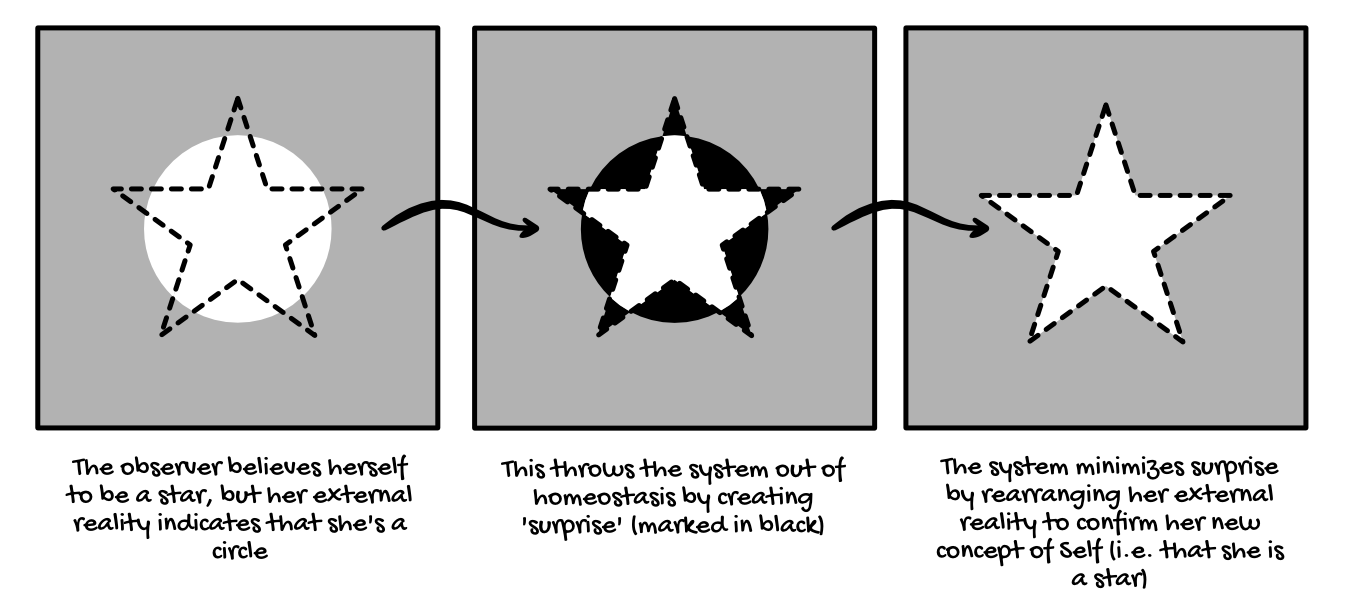
"This is a high-level visualization of what I mean when I say, 'Every Markov blanket is having a physical experience of its own consciousness.' This same pattern is happening for cells, antibodies, organs — everything. All of those components can only rearrange in the body in such a way that they maintain their own 'shape,' so to speak. A white blood cell needs to have a physical experience of being a white blood cell; a heart needs to have a physical experience of being a heart, etc."
"So," Zac said, "if one personality believes they have a scar on their left hand, the body will manifest that scar. When the patient switches to a personality that believes it doesn't have a scar, the body is now in a surprising high-entropy state. Therefore, the body rearranges to get rid of the scar, in the same way that the grey area rearranges from a circle into a star shape."
"Exactly," I said. "As counter-intuitive as this is, it's still relatively easy for us to comprehend this idea in the context of a human body. We know our body is an intelligent organism that does a lot of complex work to resist entropy and keep us alive.
Remember when I was first explaining entropy to you, just a few hours ago? I used this diagram to represent a tidy desk. The desk naturally tends towards high-probability 'messy' states, and you need to perform work to maintain it in a low-probability 'neat' state."
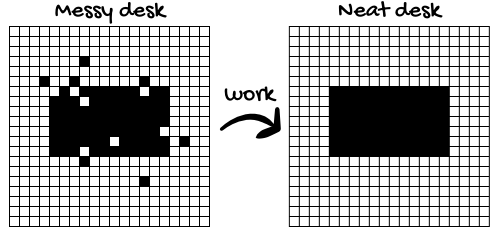
"This algorithm is doing exactly the same thing. When rogue black squares spill onto the white area, the system needs to perform work to minimize the system's entropy. Therefore, it will move the black squares back into a nice, neat rectangle shape."

